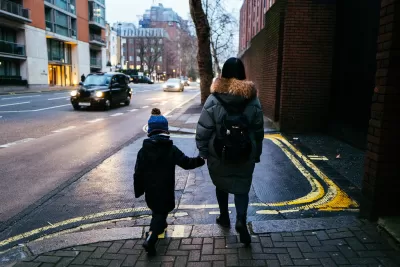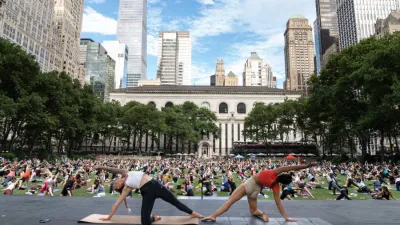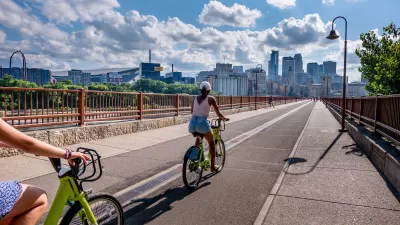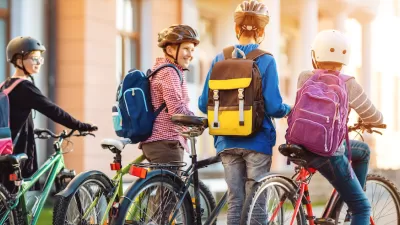More children are using active transportation modes to get to school in the wake of a policy that charges drivers to enter a low-emissions zone in central London.

Kids in London are walking and biking to school more after the city implemented the world’s largest ‘ultra-low emissions zone’ in the city center.
As Syris Valentine explains in Grist, the data comes from a study conducted by University of Cambridge and Queen Mary University researchers that sought to understand how changes in air quality would impact youth health.
In the first of many papers expected from the study, the researchers found that, a year after the ultra-low emissions zone took effect, 2 out of every 5 London students in the study had switched from ‘passive’ to ‘active’ ways of getting to school. So instead of being chauffeured to school by their parents, the students started walking, biking, scootering, or taking public transit.
According to epidemiologist Alison Macpherson, walking or biking to school “can be calming and conducive to concentration” in addition to providing an opportunity for exercise. Future studies will look to understand the reasons why parents make the switch. “While developing pedestrian-friendly infrastructure and building out protected bike lanes can encourage a shift in how people travel, Xiao found as she assembled a review of research investigating how to promote shifts to healthier transit, people preferred the stick to the carrot. In other words, discouraging car travel was often more effective than just building infrastructure conducive to active travel.”
FULL STORY: London Saw a Surprising Benefit to Fining High-Polluting Cars: More Active Kids

Study: Maui’s Plan to Convert Vacation Rentals to Long-Term Housing Could Cause Nearly $1 Billion Economic Loss
The plan would reduce visitor accommodation by 25,% resulting in 1,900 jobs lost.

North Texas Transit Leaders Tout Benefits of TOD for Growing Region
At a summit focused on transit-oriented development, policymakers discussed how North Texas’ expanded light rail system can serve as a tool for economic growth.

Using Old Oil and Gas Wells for Green Energy Storage
Penn State researchers have found that repurposing abandoned oil and gas wells for geothermal-assisted compressed-air energy storage can boost efficiency, reduce environmental risks, and support clean energy and job transitions.

Private Donations Propel Early Restoration of Palisades Playground
Los Angeles has secured over $1.3 million in private funding to restore the Pacific Palisades playground months ahead of schedule, creating a modern, accessible space that supports community healing after recent wildfires.

From Blight to Benefit: Early Results From California’s Equitable Cleanup Program
The Equitable Community Revitalization Grant (ECRG) program is reshaping brownfield redevelopment by prioritizing projects in low-income and environmental justice communities, emphasizing equity, transparency, and community benefits.

Planting Relief: Tackling Las Vegas Heat One Tree at a Time
Nevada Plants, a Las Vegas-based nonprofit, is combating the city’s extreme urban heat by giving away trees to residents in underserved neighborhoods, promoting shade, sustainability, and community health.
Urban Design for Planners 1: Software Tools
This six-course series explores essential urban design concepts using open source software and equips planners with the tools they need to participate fully in the urban design process.
Planning for Universal Design
Learn the tools for implementing Universal Design in planning regulations.
Ascent Environmental
Borough of Carlisle
Institute for Housing and Urban Development Studies (IHS)
City of Grandview
Harvard GSD Executive Education
Toledo-Lucas County Plan Commissions
Salt Lake City
NYU Wagner Graduate School of Public Service





























